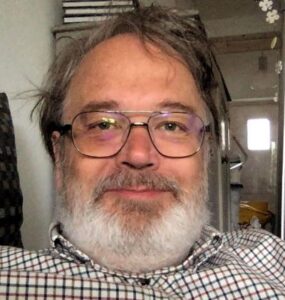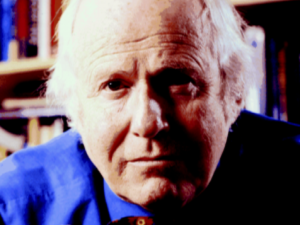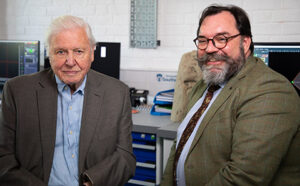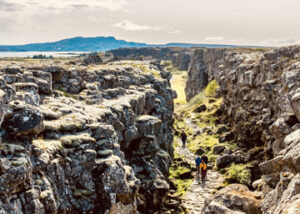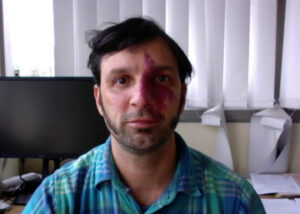Monday 20th May
“Does self-improvement really prevent dementia?”
Prof Klaus Ebmeier
Professor Ebmeier asks, whether ‘self-improvement activities’ can prevent the occurrence of dementia or reduce its likelihood.
We are bombarded daily with advice ranging from following healthy diets to avoiding loneliness, from using hearing aids to not being depressed, all said to reduce the risk of dementia. Claims are that 40% of dementia cases can be prevented by removing ‘modifiable risks’. What are these claims based on and how can we decide if they are true? Are we more responsible for our ill health than we think? Do we know which public policies to support to minimise dementia risk? How early in life should we prepare, and is there a point when any intervention comes too late? As always with science, there are limits to what we can know for sure, and I will try to explain these limits as far as preventing dementia is concerned to help you navigate the continuing media onslaught.
Klaus Ebmeier is the Foundation Chair of Old Age Psychiatry in Oxford (now in his 18th year) after cutting his teeth as a Clinical Scientist at the Medical Research Council Brain Metabolism Unit, and then as Chair of Psychiatry in Edinburgh. At the last count, the Neurobiology of Ageing Group, which Klaus founded on his arrival in Oxford in 2006 has published 1675 scientific papers. Klaus’ research focuses on brain-behaviour relationships in ageing (research into ageing and dementia) and psychiatry of old age (cognitive impairment and depression).
Klaus is also a Professorial Fellow at Linacre College Oxford, and as an Old Age Psychiatrist, runs a memory clinic for Oxford Health NHS Foundation Trust in Central Oxfordshire.
Monday 1st April
“GenAI / AI Chatbots: The Good, the Bad and the Ugly”
Professor Dan Remenyi
The concern around the world about the safety of AI is palpable. Some gurus have argued that AI will destroy the human race while other have, less dramatically, argued that it will disrupt major aspects of society. The concern was sufficient to cause the UK Government to call the World’s First Major Summit on Artificial Intelligence Safety. Hosted by UK Prime Minister Rishi Sunak at the famous WW2 code breaking site of Bletchley Park, it brought together many of the world’s leaders concerned about the future of AI. According to Google’s Gen AI called Bard AI, the summit “made a number of significant achievements [sic] towards ensuring the safe and responsible development and use of AI”.
This talk reviews global thinking on a variety of user-related issues including the safety of Gen AI (or AI Chatbots as they used to be called). The good aspects of the technology refer to how it will benefit society; the bad aspects relate to the mistakes which the technology commonly makes; and the ugly refers to the use of the technology in the hands of malfeasants. It is now clear that the main imperative is to understand the technology and by so doing avoid the risks it presents.
It is now clear that the main imperative is to understand the technology and by so doing avoid the risks it presents.
Professor Dan Remenyi has had a special interest in AI for a number of decades and has closely watched how the technology has developed and been employed in various business, industrial and educational applications. Since the arrival of the Gen AI he has focused on researching their uses and abuses. For more than three decades, he has taught ICT management at various universities in the UK, Ireland, Sweden and South Africa. He has authored or co-authored more than 30 books and some 50 academically refereed papers. He is published in all 4 of the ‘A’ rated Journals in the United Kingdom in Information Systems Management. Some of his books have been translated into Chinese, Japanese and Romanian. He holds a B Soc Sc, an MBA and a PhD.
Monday 4th March
“Pliosaurs! Dinosaurs! And Birds!! Oh, my!”
Dr Neil J. Gostling
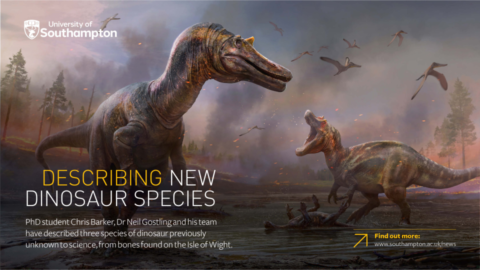
Artwork credit: Anthony Hutchings, Concept Artist and Illustrator
The peculiar land of Oz had nothing on the Gostling Evolution and Palaeobiology Lab! The scientific twister carries us from 21st Century Southampton back 100s of millions of years to unrecognisable worlds with beasts stranger and more terrifying than flying monkeys.
We study some of the major events through the history of life; everything from the origin of mammals to how birds took to the air, and the dinosaurs that roamed Mesozoic Britain.
We use CT scanning technology to delve into the internal anatomy of fossils, and soon will be using engineering techniques to study dinosaur bite forces.
Dorothy wouldn’t know what hit her if she arrived in our lab…
Dr Neil J. Gostling is Associate Professor of Evolution and Palaeobiology in the School of Biological Sciences at the University of Southampton.
Neil did his PhD at the University of Reading looking at genes that pattern our nervous system, before moving to Bristol to study fossilised embryos of some of the earliest animals. Recently Neil was in a BBC documentary, Attenborough and the Sea Dragon, and was lucky enough to meet and speak to Sir David Attenborough.
He lives in Southampton with his family, and, with his wife Claire, runs the Facebook group The Dinosaur on Your Window Sill.
Monday 5th February
“The onset of modern plate tectonics”
Professor Craig Storey
Since the 1960s we have accepted the plate tectonic paradigm as being central to how our planet operates at the present day.
However, there is much ongoing debate as to when plate tectonics began and how similar it was to the current observable mode. Hypotheses range from the Hadean to the Neoproterozoic and therefore span across profound changes in the Earth system, including atmospheric oxygenation and the proliferation of life.
In this talk, Professor Craig Storey will review some of the hallmarks of plate tectonics, their first appearance and secular evolution, and speculate on when it all began and how it evolved.
Craig studied geology at Oxford Brookes University and was awarded a PhD by the University of Leicester in 2003 for his research on eclogites (metamorphic rocks which contain garnet) in the Glenelg-Attadale Inlier, NW Scotland. He manages the Crustal Evolution Research Group at Portsmouth, equipped with an array of state-of-the-art electron microscopes, x-ray equipment, plasma mass spectrometers, lasers and sample preparation facilities – one of the largest dedicated research groups of its kind in Europe.
Craig’s current research focus is on the secular evolution of the continental crust and complementary depleted mantle from the beginnings of the Earth through to the present day.
Monday 15th January
“A Safe Sky – The Trajectory of Technology
in Air Traffic Control”
Lee Boulton
For January’s talk, our speaker, Lee Boulton, will give us a general overview of Air Traffic Control, reflecting on how it has evolved over the decades. He’ll explain how technology is at the heart of supporting our air traffic controllers, who manage well over 2 million flights per year operating across the UK – a number that is projected to grow in future.
Lee Boulton has 35 years experience working in Air Traffic Control, having joined NATS in 1988, the largest Air Traffic Control service provider in the UK. He spent 16 years as an operational air traffic controller at the London Air Traffic Control Centre which was relocated from the Heathrow area to the south coast near Swanwick, Hampshire, over 20 years ago. Lee has held senior roles in NATS, including the Head of Air Traffic Control Procedures and Head of Safety at Swanwick. He is currently the Head of Airspace Development for NATS – at a time when airspace modernisation is a key national infrastructure project. Lee also leads the project team responsible for developing the next generation of operating system that will support many Air Traffic Control centres across Europe.


